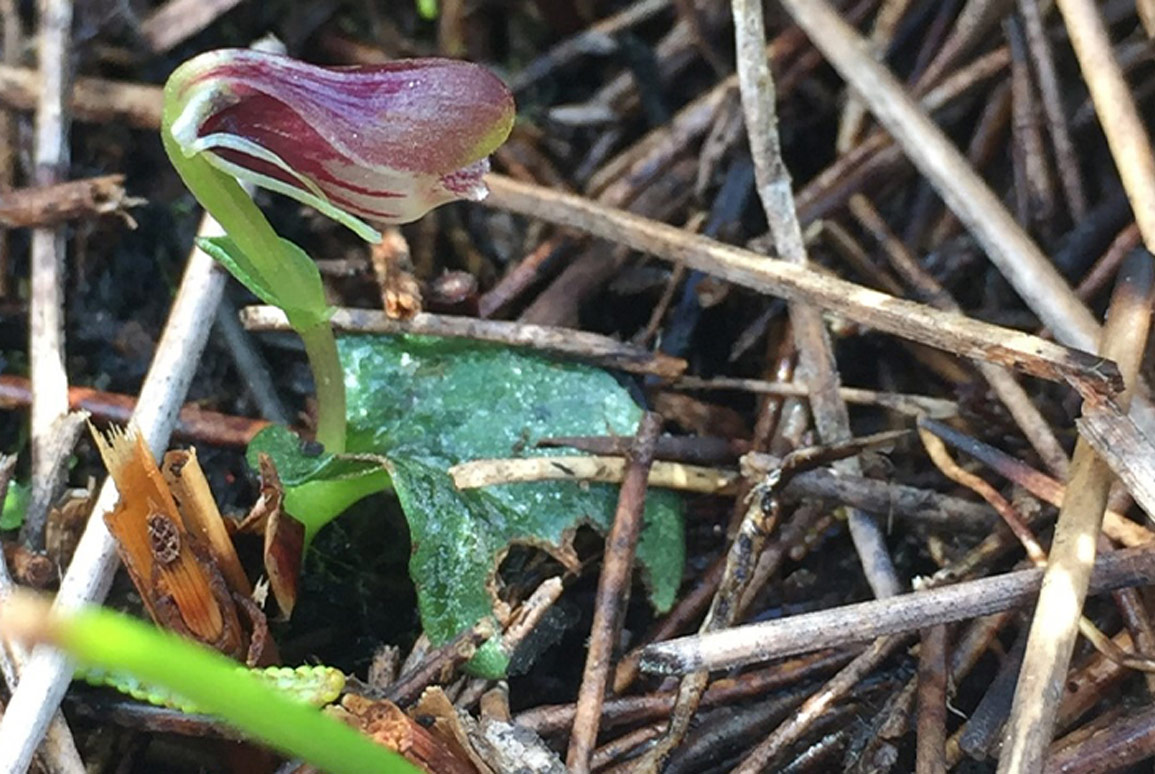Spider orchids and the rare, hooded swamp orchid — Corybas carsei
21 November 2022
New Zealand is home to an incredible variety of indigenous orchids. They occur from the sub-alpine heights to our lowland forests and swamps and can be epiphytic light lovers or saprophytic understorey dwellers.

One of our more distinctive orchid groups is known as the spider orchids (Genus: Corybas). So-named New Zealand is home to an incredible variety of indigenous orchids. They occur from the sub-alpine heights to our lowland forests and swamps and can be epiphytic lightdue to the modified, lateral petals and sepals that stretch out in a linear form, resembling spider legs – although some of the species in this group lack this feature.
The checklist of New Zealand’s flora and New Zealand Plant Conservation Network lists 22 species of spider orchid as accepted taxonomic entities. The New Zealand Native Orchid website lists 34 entities which include some yet to be formally described.
About half of the described Corybas species are threatened. This means they are a high priority group for conservation. Plants become threatened for a variety of reasons. Some New Zealand orchids are naturally uncommon, some are threatened by vegetation clearance, some suffer from enthusiastic plant collectors, and some we just don’t know enough about to understand what the threats are.
Our most threatened Corybas species is the swamp helmet orchid (Corybas carsei). This plant was first described by Thomas Cheeseman in 1911 and was known from three wetland populations. By mid-century it was presumed extinct, and was rediscovered during a survey of the Whangamarino wetland, Waikato in the 1980’s. This wetland remains its only known habitat, and although the population has grown from 30 plants in the 1980’s to over 400 plants in 2022, the area occupied by these tiny orchids is extremely small – equal to three parking spaces.
The main threat to this species continues to be direct and indirect wetland habitat modification. This is mainly in the form of drainage and increased nutrients from farm runoff. The excess nutrients can exacerbate growth of taller species which outcompete C. carsei. In response to this, the Department of Conservation have been managing the population by controlled burnoffs of the orchids habitat, which has been very effective in growing the population.
Te Papa’s orchid expert, Carlos Lehnebach, is working with a team of other scientists from Otari Botanic Native Gardens, Victoria University, and Massey University to understand the populations genetic diversity and how its relationship with fungi helps it form seed. They hope that this greater understanding of the plant’s biology will help them to establish populations at other locations, and even establish a back-up population at Otari Gardens. We wish them luck.
Find out more
Meet the Boffa Miskell ecology team: Antony Kusabs
For further information please contact Antony Kusabs

